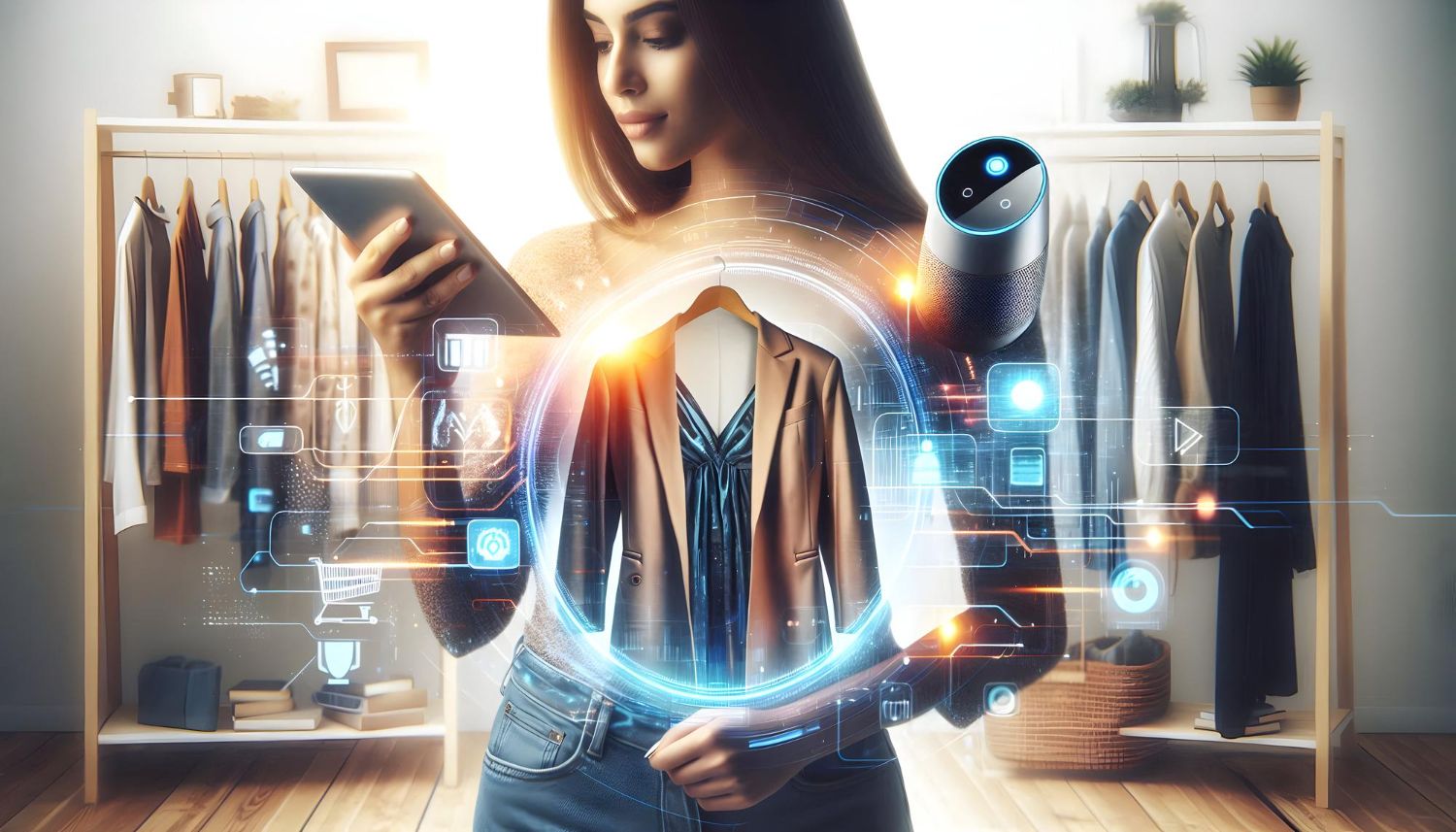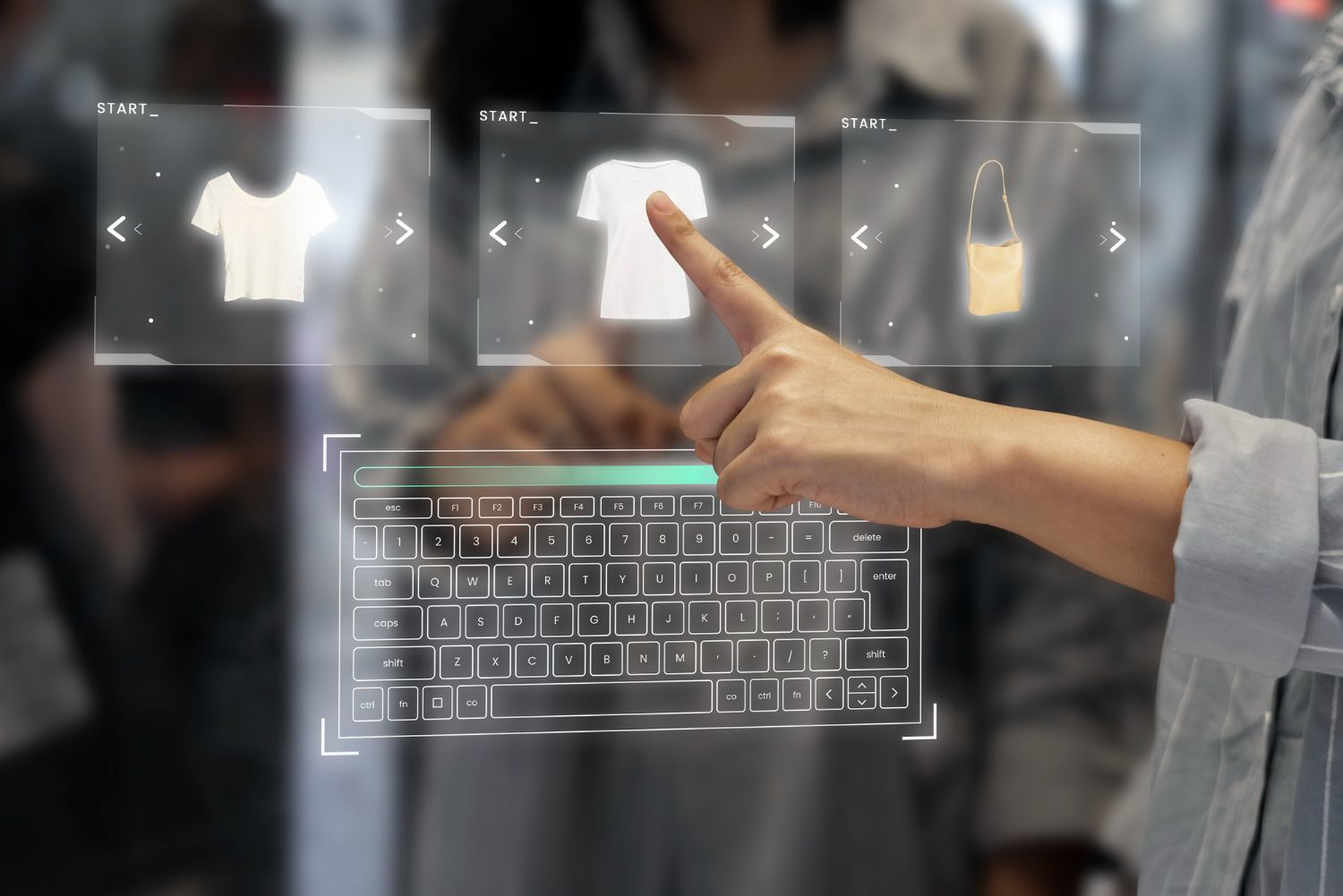Introducing AI Fashion Videos: A Game-Changer for Online Shopping

Fashion eCommerce has made huge strides over the last decade, but one challenge has always remained: recreating the in-store shopping experience online. Shoppers want to see how fabrics move, how garments fit, and how items look from different angles before committing to a purchase. Static photos—no matter how polished—can’t always deliver that clarity.
This gap between expectation and reality is why online returns in fashion remain high. Shoppers order items they’re unsure about, only to be disappointed when the product doesn’t match what they imagined. While AI product photography and AI fashion photography have improved visual representation, the demand for richer, more lifelike content keeps growing.
Enter AI fashion videos. By combining artificial intelligence with fashion visuals, retailers can now showcase products in motion, creating experiences that come closer than ever to walking into a store.
What Are AI Fashion Videos?
AI fashion videos are digital clips generated with artificial intelligence that display clothing and accessories in realistic motion. Unlike traditional video production, which requires models, cameras, lighting, and editing, these videos can be created from still images or digital product files.
Key features of AI fashion videos include:
- Dynamic model movement: Clothing is shown on virtual models who walk, turn, and pose naturally.
- Fabric simulation: AI replicates how materials like silk, denim, or cotton flow, stretch, or drape.
- Angle diversity: Items can be viewed from multiple perspectives in a single video.
- Cost efficiency: Production is faster and more affordable than traditional shoots.
When paired with virtual try on technology, these videos elevate the digital shopping journey. Instead of relying on guesswork, customers see how a product behaves in motion—reducing hesitation and making the purchase decision easier.
Key Benefits of AI Fashion Videos for Shoppers
Shoppers are the ultimate winners when retailers adopt AI-driven visuals. Here’s why:
Clearer Fit & Fabric Visualization
One of the hardest parts of online shopping is imagining how a garment looks in real life. AI fashion videos let customers see how jeans stretch when walking, how a dress flows when turning, or how a jacket fits when zipped up.Increased Confidence in Buying
When buyers feel certain about what they’re purchasing, they’re far less likely to abandon their carts. Videos offer reassurance that the product matches expectations.Styling Inspiration
Seeing clothes styled in motion—paired with shoes, bags, or accessories—helps shoppers picture full outfits. This cross-selling opportunity also boosts basket value for retailers.Better Mobile Shopping Experience
Short-form video content is already dominating platforms like Instagram and TikTok. AI fashion videos bring that same energy to product pages, making them more engaging for mobile-first audiences.
The result: a smoother decision-making process where customers trust what they see and feel good about clicking “Buy Now.”
How AI Fashion Videos Help Brands Increase Sales
For retailers, AI fashion videos aren’t just about keeping up with trends—they directly impact revenue and brand perception.
Boost in Conversions
Studies in eCommerce show that shoppers are more likely to purchase when they see video content compared to still photos alone. Motion captures attention, keeps shoppers on the page longer, and provides the reassurance needed to complete a purchase.Reduction in Returns
One of the biggest pain points for fashion retailers is return rates. Customers often return items that don’t fit or look as expected. By showing realistic motion and fabric behavior, AI videos reduce these surprises and cut down on costly returns.Competitive Advantage
Fashion is a crowded industry. Brands that adopt AI-driven visuals early differentiate themselves by offering richer experiences that others can’t match. This innovation signals modernity and builds stronger loyalty with tech-savvy audiences.Lower Production Costs
Traditional fashion videos are expensive, requiring models, photographers, videographers, and post-production editing. With AI, brands can scale content creation without logistical challenges. For collections with hundreds of SKUs, this efficiency is game-changing.
Real-World Examples of AI Fashion Videos in Action
AI fashion videos are no longer theoretical—they’re already being used across the industry.
- Apparel brands: Fast-fashion retailers use AI videos to showcase clothing on diverse body types without needing separate shoots for each.
- Luxury houses: High-end brands combine AI videos with AI Generated Product Photography to highlight the fine details of fabrics, stitching, and embellishments.
- Footwear labels: Shoe companies show how sneakers look while walking, or how heels change posture, giving shoppers a true-to-life view.
- Accessories & jewelry: Motion brings sparkle, shine, and texture to life in ways photos cannot.
This adoption isn’t limited to global giants. Smaller labels and independent designers are tapping into AI-powered visuals to compete with larger players at a fraction of the cost.
Challenges & Considerations for Retailers
While AI fashion videos present huge opportunities, retailers must navigate some important considerations:
Upfront Setup
Implementing AI-powered video tools requires investment in software and processes. Partnering with an AI Development company can help brands deploy the right systems efficiently.Authenticity Concerns
Shoppers value transparency. Brands must clarify that AI visuals accurately represent the product and avoid over-editing that misleads customers.Consistency Across Catalogs
Videos need to match brand tone, style, and quality across hundreds of products. Poorly executed videos can damage credibility.Data Privacy
For retailers adopting virtual try on technology, privacy must remain a top priority. Customer data and body measurements need to be handled responsibly.Testing & Performance
Retailers should test AI videos across different devices and platforms. A video that looks great on desktop may lag on mobile if not optimized.
These challenges are manageable, but they require planning and the right partners to execute effectively.
The Future of AI in Fashion eCommerce

The next phase of AI in fashion goes far beyond static or even moving visuals. Here’s what the future may hold:
- Personalized AI videos: Imagine uploading your body profile and watching clothing displayed on a digital model shaped just like you.
- Virtual showrooms: Brands could host digital stores where customers view collections as if walking down a runway.
- AI-driven styling: Fashion platforms may combine AI video with smart recommendations to show not just one product but a complete outfit.
- Platform integration: A shopify development company may soon embed AI video support directly into product page templates, making adoption smoother for online stores.
The long-term vision is clear: online shopping will feel less transactional and more like an immersive fashion experience.
Conclusion
Fashion eCommerce thrives on trust, and trust grows when shoppers know exactly what they’re buying. AI fashion videos close the gap between online browsing and in-store shopping. They boost confidence, lower returns, and set brands apart in a highly competitive market.
From AI product photography to advanced video tools, fashion visuals have evolved rapidly in recent years. The brands that embrace AI fashion videos now will not only improve conversions today but also position themselves as leaders in the future of digital retail.
FAQs
1: How do AI fashion videos differ from traditional videos?
They’re created using artificial intelligence, often without full production crews, making them faster and more scalable.
2: Will AI fashion videos replace photos?
No. Photos remain important for quick views and thumbnails, but videos add motion and realism. The two work best together.
3: Are AI fashion videos expensive for smaller retailers?
The cost has dropped significantly. With AI platforms available, even small brands can start adopting them at a manageable budgets.
4: How do AI videos impact return rates?
By showing realistic motion and fit, shoppers make more informed choices, which helps lower returns.
5: How does virtual try on technology connect with AI fashion videos?
Together, they create an even more powerful experience—videos show motion while virtual try-ons personalize fit and styling.
